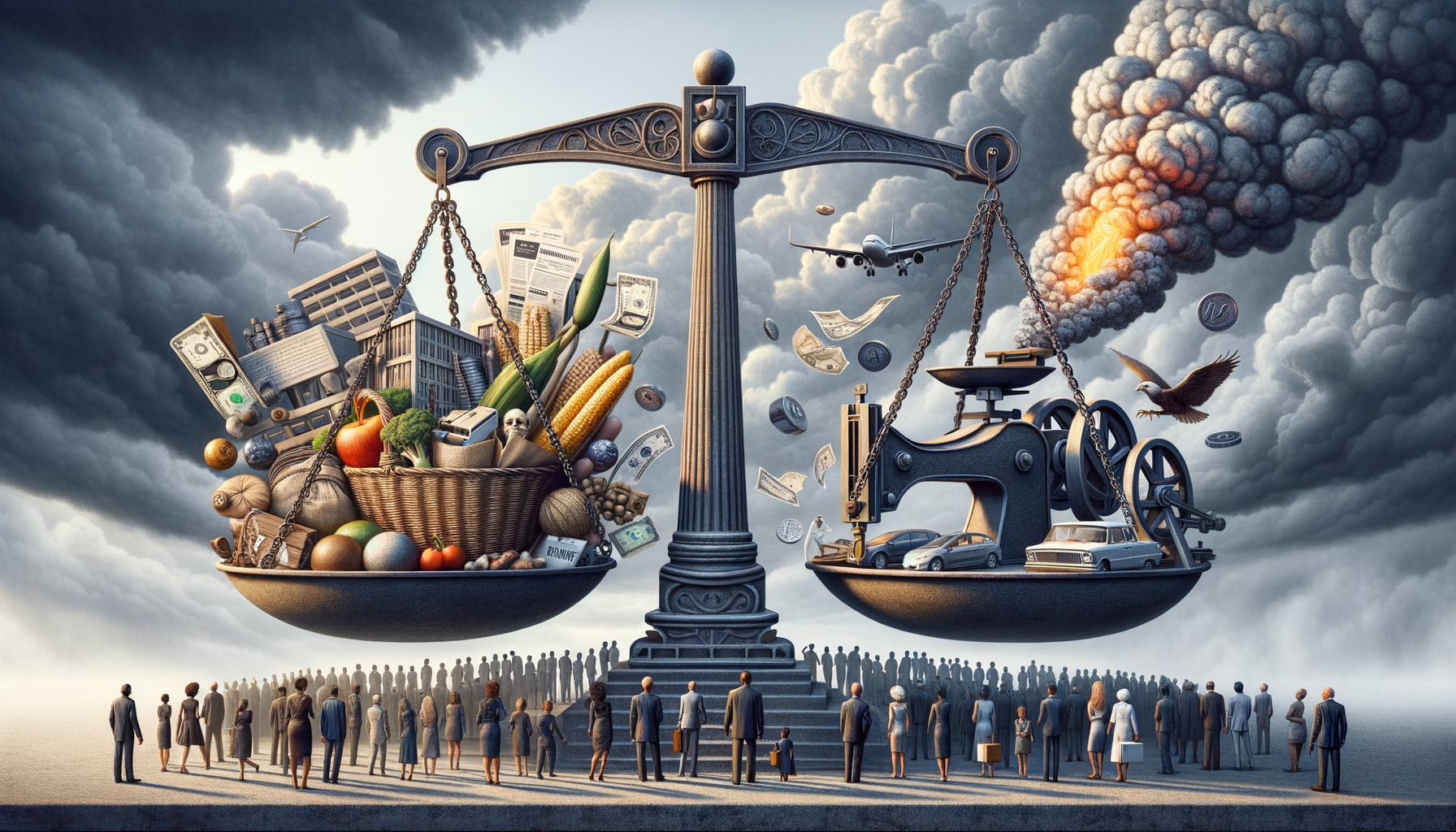“Unmasking the Fed’s Tryst with Fire: An Insight into the CPI Inflation Report”

Playing a High-Stakes Game: Federal Reserve’s Mechanisms in Controlling Inflation
It can be considered that the world we exist in often seems like a delicate balancing act. Nothing could elaborate this more precisely than the struggle which the Federal Reserve (the Fed) often faces; the fight to control inflation. For the unacquainted, inflation is a general increase in prices and fall in the purchasing value of money. While some inflation can indeed stimulate spending and thus economic growth, rampant inflation can devalue money and devastate economies. This fine line that the Fed walks is akin to walking through a fire, and as thrilling as this may sound, the implications are far-reaching and consequential.
To understand the predicament the Federal Reserve finds itself in, it’s crucial to take a step back and examine the Consumer Price Index (CPI). This economic indicator measures changes over time in the general level of prices of goods and services that households consume. Simply put, it’s a measure of inflation. The data for this is revealed on a monthly basis by the Bureau of Labor Statistics and serves as a significant input into Federal Reserve policy decisions.
In a report published in February, the CPI surged by 0.4%, signaling an annual inflation rate of 1.7%. Ideally, the Fed seeks to maintain an average inflation rate of 2%. In certain circumstances, the Fed allows inflation to rise beyond the 2% threshold temporarily to average out periods of low inflation. However, this specific handling of inflation can be equated to playing with fire, as the slightest miscalculation could spiral out of control, leaving the Fed grappling to regain authority.
Indeed, the concern arising from the latest CPI report isn’t that inflation is too high. Rather, the issue lies in trying to control the rate of inflation – a difficult task at the best of times – during a period of significant economic uncertainty caused by the COVID-19 pandemic. Nonetheless, the Federal Reserve has voiced that these inflation concerns are transitory, demonstrating a lax view of the recent surge in inflation.
However, it’s not just the pandemic that poses a risk to inflation control. Over the years, economists have grown increasingly worried about the Fed’s longtime practice of “Quantitative Easing” (QE). QE is a monetary policy whereby a central bank such as the Federal Reserve purchases longer-term securities from the open market to increase the money supply and encourage lending and investment. When there is too much money floating around the economy and demand outstrips supply, we have a classic case of inflation.
With the COVID-19 pandemic, the QE policies have dramatically increased, sending vast amounts of money into the economy. However, proponents of Fed’s unconventional monetary policies express confidence in the central bank’s ability to counter inflationary pressures resulting from these actions. Their argument is grounded in the belief that the downward pressure exerted on interest rates has contributed significantly to fostering economic recovery from major crises like the 2008 financial crash and the COVID-19 pandemic.
However, the critics, termed the “inflation hawks,” are not wholly convinced of the Fed’s deft-hand with monetarism. They argue that the Federal Reserve is taking a gigantic risk with the economy by allowing inflation to run hotter for longer periods. To them, there is an inevitable danger that prices could start accelerating faster than the Fed can rein them in, resulting in adverse dynamics with potentially far-reaching and destructive effects.
Furthermore, these inflation hawks have expressed concerns that ultra-low interest rates — a resultant of the Fed’s easy monetary policies — can create asset price bubbles or fuel risky lending practices. They point to the housing bubble that led to the 2008 financial crisis as an example of such perilous ventures.
Reports suggest a current inflation rate of 2.6%, which surpasses the Fed’s desired 2% trajectory. While the Fed has asserted it is willing to let inflation run above the 2% mark temporarily to make up for periods of lower inflation, critics fear that prices may spiral out of control and destabilize the economy. Nevertheless, the Federal Reserve maintains that these pressure points are temporary or transitory – a simple recalibration created by a shift in spending behavior as the nation continues to grapple with the effects of the pandemic.
The Federal Reserve’s top officials remain adamant that the central bank has the necessary tools and strategies to control inflation effectively. They believe that any inflation arising from the current economic recovery would be temporary and manageable with targeted measures. However, who decides when transitory becomes permanent is a pertinent question no one is quite sure how to answer.
In conclusion, this is uncharted territory, and the Federal Reserve system’s ongoing dance with inflation is a high-stakes gamble; the outcome of which, will define the course of the U.S. economy. As the situation evolves, only time will tell if the Fed’s flexible stance towards inflation is a perfect counterbalance, or if it’s akin to playing with fire, potentially causing an economic burn. We must keep our eyes fixated on the moves of this powerful monetary institution to understand its ins and outs since the implications are far-reaching, significant and indeed, affect us all negating our personal or professional orbits.
